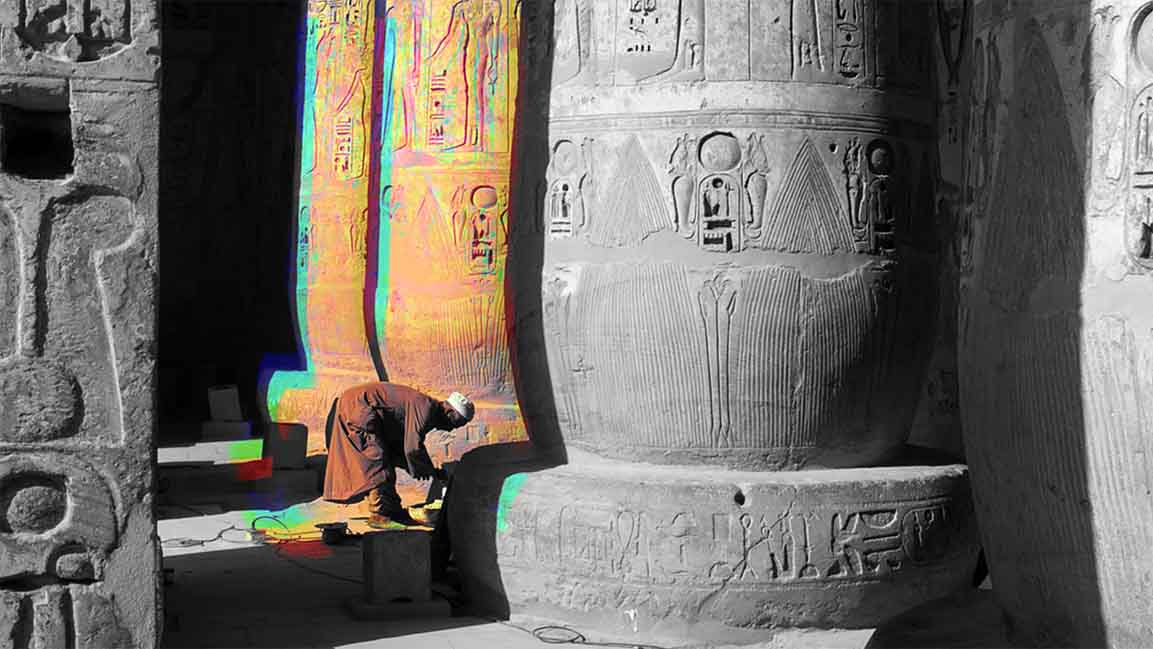- | 9:00 am
Egypt is losing its rich ancient wonders. Can they be saved?
Experts say some of its most important historic buildings are in grave danger

The pyramids and temples in Egypt that survive today tell us about the country’s glory. But now, the crumbling sites highlight the transient nature of urban glory and our collective apathy towards the heritage.
There is disbelief among Egyptologists that the country’s some of the richest archeological wonders — pyramids of Giza, the step-pyramid of Djoser, the Great Sphinx, Luxor Temple, and Valley of the Kings — have reached such a parlous state.
“Egypt has a vibrant cultural heritage,” says Dr. Ana Sofia de Carvalho Gomes, an Egyptologist and research assistant at Freie University, Berlin. Protection of cultural heritage is extremely important; it is vital that these precious historical monuments and artifacts are preserved, she adds.
In a statement released by UNESCO, Irina Bokova, Director-General of UNESCO, asserted a dire need to protect Egypt’s ancient monuments and antiquities. “Egypt’s cultural heritage is not only an inheritance of the past, reflecting its rich and diverse history; it is also a legacy for future generations, and its destruction seriously weakens the foundations of Egyptian society.”
APATHY AND LACK OF FUNDS
The lethal effects of climate change on the vast but delicate structures, which depended on constant use and maintenance, have combined with the bite of the state’s apathy and lack of funds.
Many of the monuments and ancient sites have been looted and neglected for decades, but it got worse in the last few years when
political unrest and militant attacks made it impossible to restore any of the monuments, mostly due to a lack of funding. “From May 2011, the loss of cultural heritage was enormous. That was a direct effect of the lack of security after the Arab Spring,” says Gomes.
According to various reports, more than 90% of Egypt’s ancient monuments are neglected, and artifacts are stolen from museums in Kantara, Mit Rahina, and Malawi.
Sally Soliman, an activist and Egyptologist, says the disappearance of artifacts is “scandalous.”
“How are these things going out of the country? Through the airport and port?” she asked, pointing out that many archeological sites, such as Beit El-Razaaz and Champollion palace, are poorly maintained by the authorities and are often seen strewn with garbage.
Soliman is known for preserving and reviving Egyptian heritage and culture. She initiated and supported multiple groups to document and save threatened monuments and sites in Egypt.
Soliman expressed her concern for the lost antiquities; she’s “angry and worried, as not enough is being done to preserve the monuments for future generations.”
Pointing out that some of the renovations are only superficial, she gave an example of Baron Empain Palace, alternatively known as Le Palais Hindou (The Hindu Palace), for which the renovation included “fake grass and spotlights in the garden, while the palace itself is at the verge of collapsing.”
LOOTING IS INCREASING
Meanwhile, space archaeologist and Egyptologist Sarah Parcak discovered several “looting pits” in satellite images that have helped recover the remaining treasure left behind by the looters.
“I use satellite images and process them using algorithms, and look at the subtle differences in the light spectrum that indicate buried things that I excavate and survey,” said Parcak in her TedTalk. “Looting is increasing.”
Parcak’s discovery through satellite images emphasizes how important and urgent it is to protect the ancient ruins of Egypt. “If we do nothing to stop the problem, all of Egypt’s sites will be looted by 2040,” added Parcak.
These ancient treasures are vital for Egypt’s tourism industry, which accounts for 12% of Egypt’s gross domestic product.
RESTORATION OF MONUMENTS
The government is slowly trying to restore the crumbled structures. The Pyramid of Djoser, built 4,700 years ago, was severely damaged by an earthquake in 1992. The monument was recently renovated and reopened to the public after a 14-year restoration.
Similarly, the restoration of the 13th-century monument, Al-Zahir Baybers Mosque, has also begun. The Statue of King Thutmose II, sitting inside the Karnak Temple in Luxor, has also been restored, as announced by Egypt’s Ministry of Tourism and Antiquities.
Also, considering how catastrophic Mallawi Museum’s robbery in 2013 was, “the majority of the stolen artifacts have been recovered,” said Gomes.
The government is trying to restore and preserve the monuments and artifacts, but more is needed.
“The sheer amount of antiquities makes it very difficult to process and protect them. It would require a lot of human and financial effort. In times of economic and social crises, it is even more difficult than usual to maintain this protection,” said Gomes.
Egypt has a rich cultural heritage, with unlimited treasures from millions of years ago. “Any loss of cultural property would impoverish the collective memory of humanity. Heritage engages our curiosity for knowledge and teaches a lot about architecture, environment, social structures, economy, religious beliefs, injustices, and tolerance. Egypt’s heritage has had a lasting and profound influence worldwide,” Gomes added.
For this reason and more, protecting these gems is of utmost importance.








































